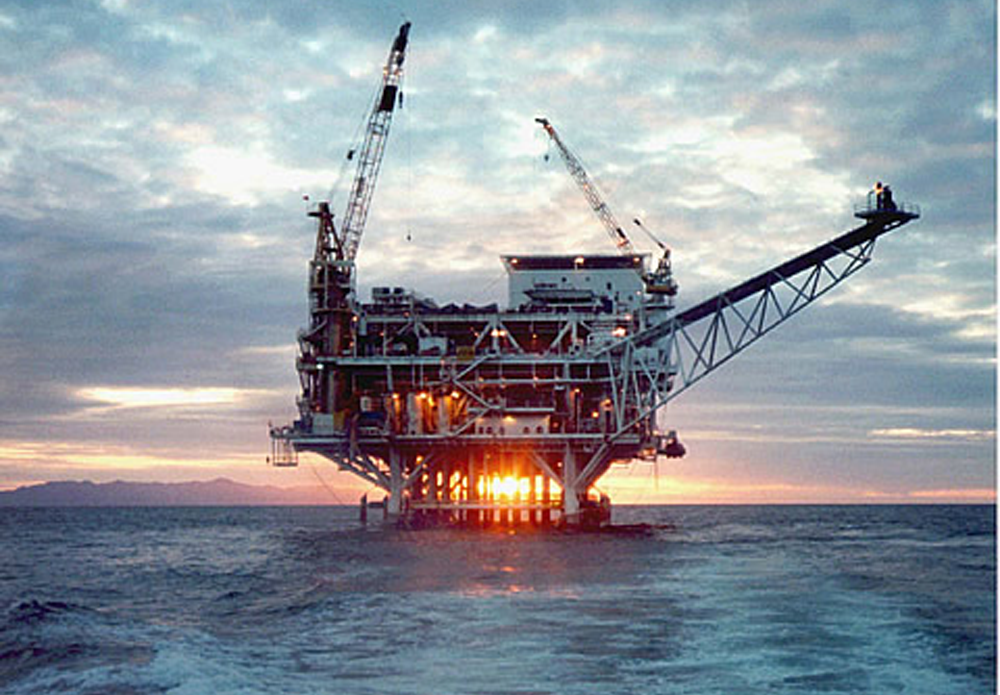Can You Profit From Rising Gas Prices?

If you’ve stopped off at a gas station to fill up any time in the past two months, you’ve likely found yourself awestruck by the price at the pump. Specifically, gas prices are up 22% in March alone and show no signs of stopping. Across the country, the price per gallon hovers above $4, reaching as high as $6 in some regions. As a result, investors are wondering if they can profit from rising gas prices as they watch the dollars on the pump add up.
There are several ways to profit from rising gas prices. No, we don’t recommend filling 55-gallon drums and reselling it as prices continue to rise. Instead, investors need to look upstream. Investing in producers, refiners and distributors is a smart way to capitalize on rising prices.
Here’s a look at some of the strategies for investing in oil and gas companies, and how exposure to upstream and mid-market players can help ease some of the pain you might experience at the pump.

Invest in Crude Oil
The further upstream you can invest, the more potential for profit there is when it comes to rising gas prices. It’s why many investors put their chips in crude oil. While investing directly in commodities contracts offers tremendous potential, many investors find similar results in managed funds and ETFs. There are several ETFs to consider, including the United States 12 Month Oil Fund LP (USL) and the United States Gasoline Fund LP (UGA).
For those more interested in investing in individual entities, it’s worth exploring some of the year’s top gainers. Obvious choices include Chevron (NYSE: CVX), ConocoPhillips (NYSE: COP), ExxonMobil (NYSE: XOM) and Shell (NYSE: SHEL). These multinational producers are some of the biggest companies in the world. And they hold significant sway over the energy sector’s performance.
Looking for investments that are smaller than mega-cap monoliths, yet large enough to command stability and profitability? For example, consider companies like EOG Resources Inc. (NYSE: EOG), Continental Resources, Inc. (NYSE: CLR) or Marathon Oil Corporation (NYSE: MRO). These large cap companies focus primarily on hydrocarbon exploration, putting them at the top of the funnel.
Midstream Refining Investments
Crude oil isn’t gasoline: it’s merely the means to gasoline and other petroleum-based products. To get there takes the efforts of refineries. These refineries are another opportunity for investors to capitalize on rising gas prices downstream.
Investing in refineries is more complicated than investing in crude, largely because the world’s largest refineries are integrated companies. Therefore, this means an investment in ExxonMobil or Chevron offers exposure to refining. For pure-play refinery investments, there are considerably fewer options. Domestically, investors might want to look at Valero Energy Corporation (NYSE: VLO) or HollyFrontier Corp. (NYSE: DINO).
Ultimately, an investment in crude oil production is the best way to gain exposure to refining. For those who want to avoid mega cap oil conglomerates, midstream refineries offer opportunities for those willing to research them.
Midstream Distribution Companies
Once refined, gas needs to get from refineries to the pump where it’s purchased by motorists. Here again, there’s significant opportunity to profit from a booming energy market. There are a diverse range of companies to choose from in the midstream distribution market, which often goes overlooked by those seeking broader exposure to crude oil.
From pipeline operators to trucking companies and even brokerages, the stage before consumer purchase is rife with opportunities to profit from rising gas prices. Start with companies like ONEOK, Inc (NYSE: OKE), Plains All American Pipeline (NASDAQ: PAA), Williams Companies Inc. (NYSE: WMB) and Kinder Morgan Inc. (NYSE: KMI).
Also grouped into this segment are oil equipment servicers: the companies charged with maintaining pipelines, refining facilities and even oilfield operations. While they service every phase of the value stream, the profit potential of these companies tends to align with midstream distributors. Companies in this area worth looking at include Schlumberger NV (NYSE: SLB), Baker Hughes Co. (NASDAQ: BKR) and TechnipFMC (NYSE: FTI).
When in Doubt, Diversify Through ETFs
Not sure where to invest in the gasoline value stream? Investors unfamiliar with the energy sector often find that the simplest way to gain exposure is through broad-market ETFs. In fact, there are a variety of diversified energy ETFs that include producers, refineries, distributors and service companies, and many have extremely low fees.
Consider the SPDR S&P Oil & Gas Exploration & Production ETF (XOP), Invesco Dynamic Oil & Gas Services ETF (PXJ), VanEck Oil Services ETF (OIH) or the iShares US Oil Equipment & Services ETF (IEZ), for starters. There are a variety of options depending on allocation, assets under management and diversification.
Where Can Investors Profit Most from Rising Gas Prices?
As the cost of gas prices get passed downstream to consumers, there’s an inverse investing relationship to consider. The further upstream you invest, the more potential for profit. It’s no coincidence that the largest companies mentioned above are integrated oil and gas companies that focus primarily on discovery, production and refinement. Overall, these are the companies with the largest potential for profit.
This isn’t to say that midstream companies aren’t worth investing in. Niche exposure to independent refineries or oilfield servicing companies can offer great return on investment to investors willing to do the research required to understand the business. With gas prices at all-time highs, it’s worth the time and effort now more than ever.
Just remember that the closer you get to the pump, the lower the potential profits tend to be from energy investments.






